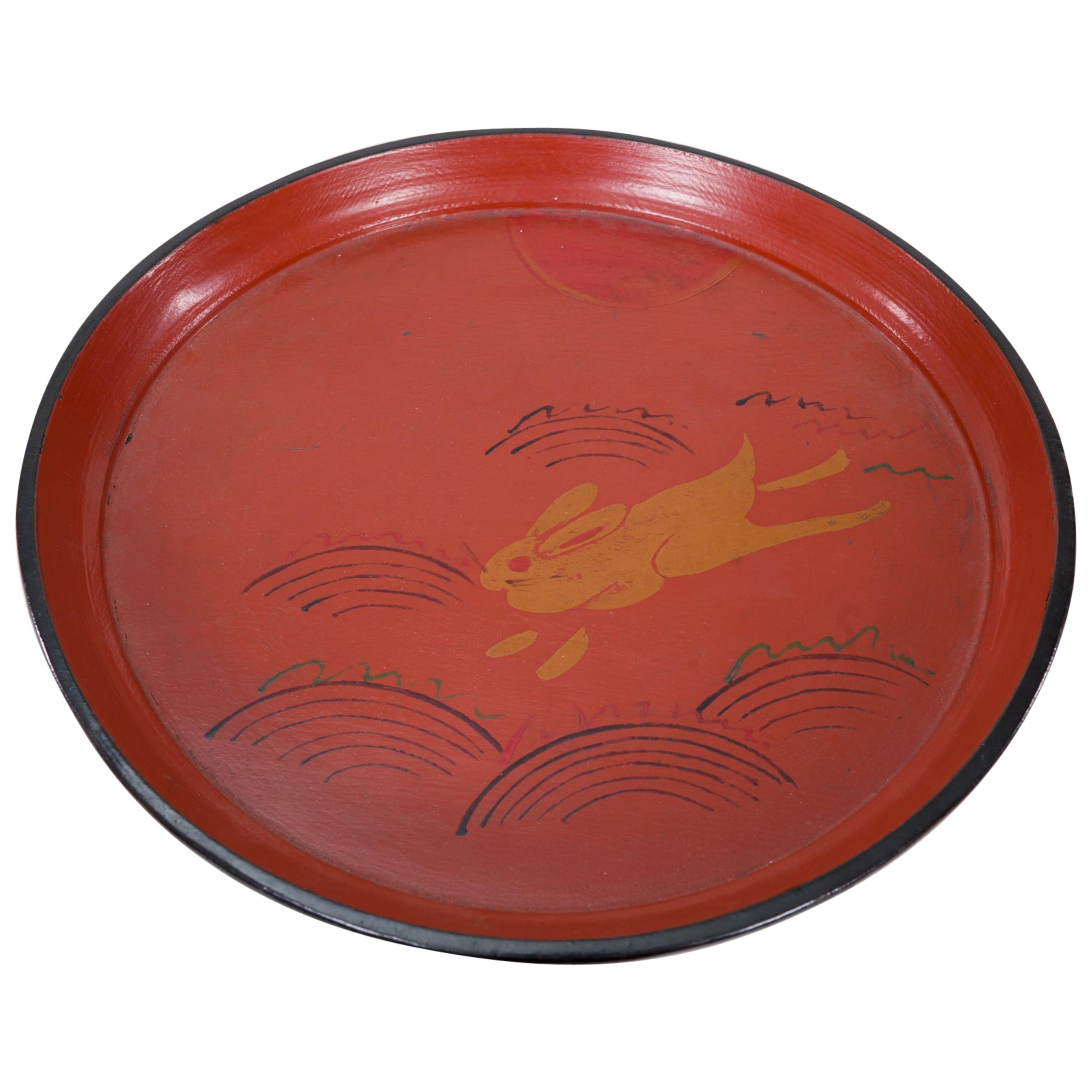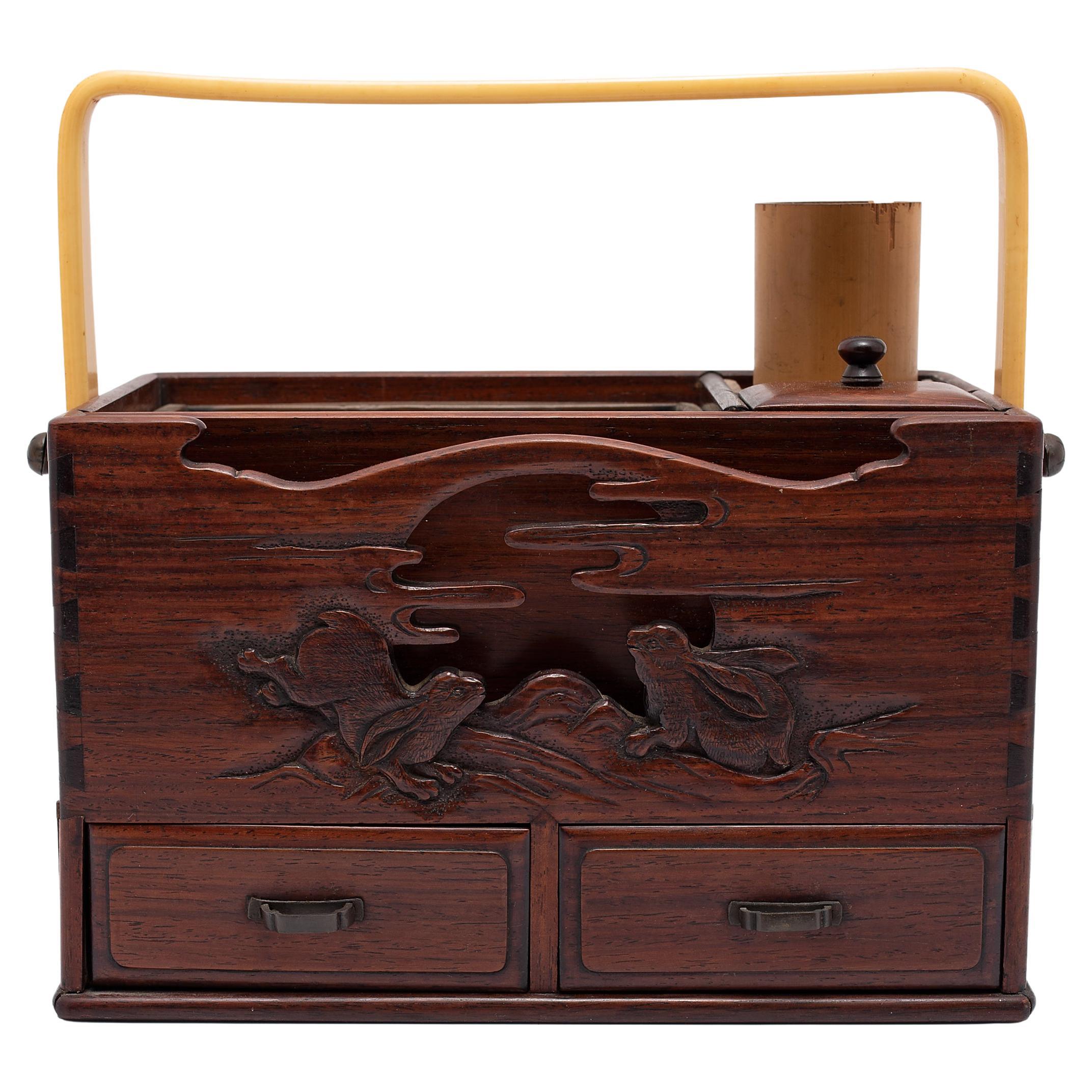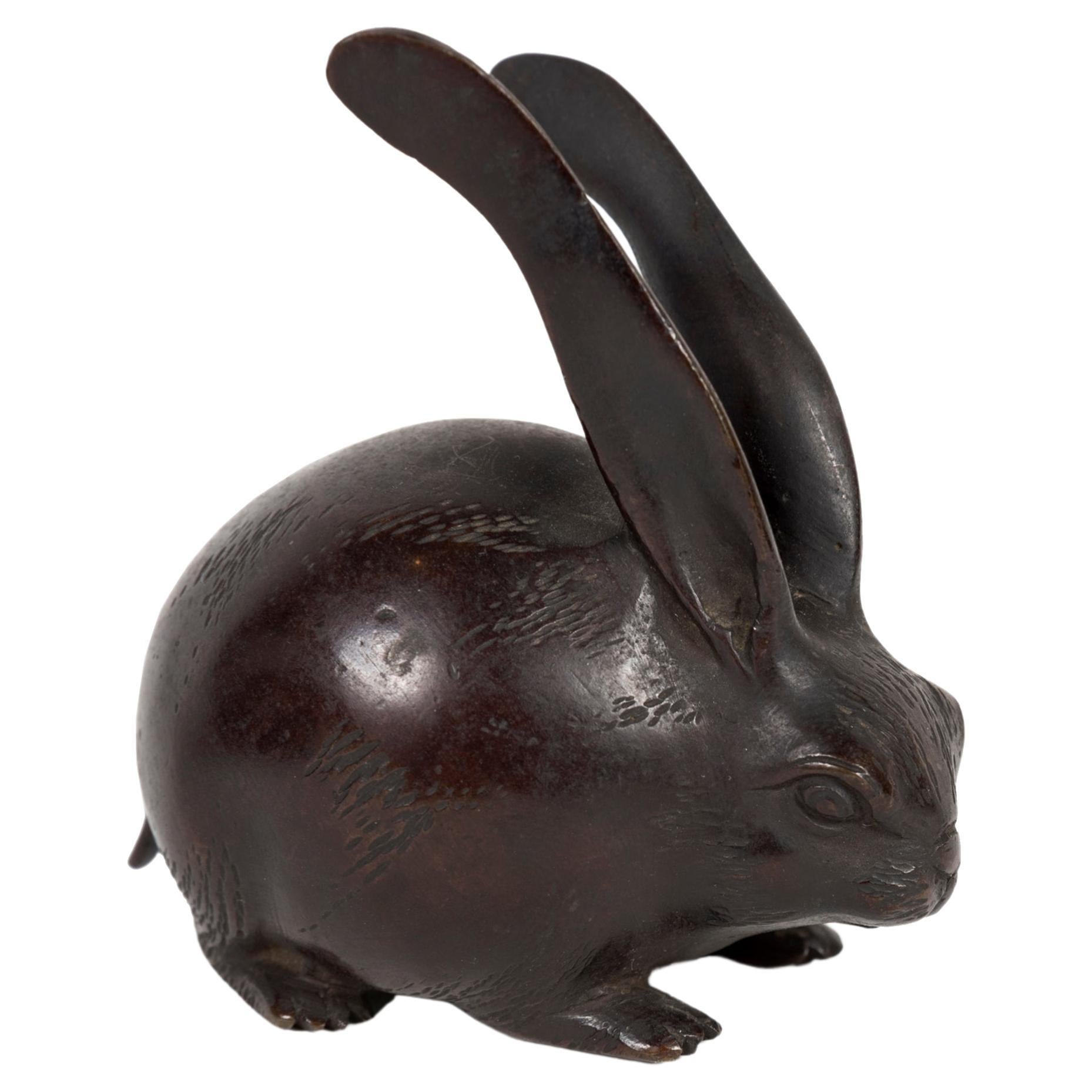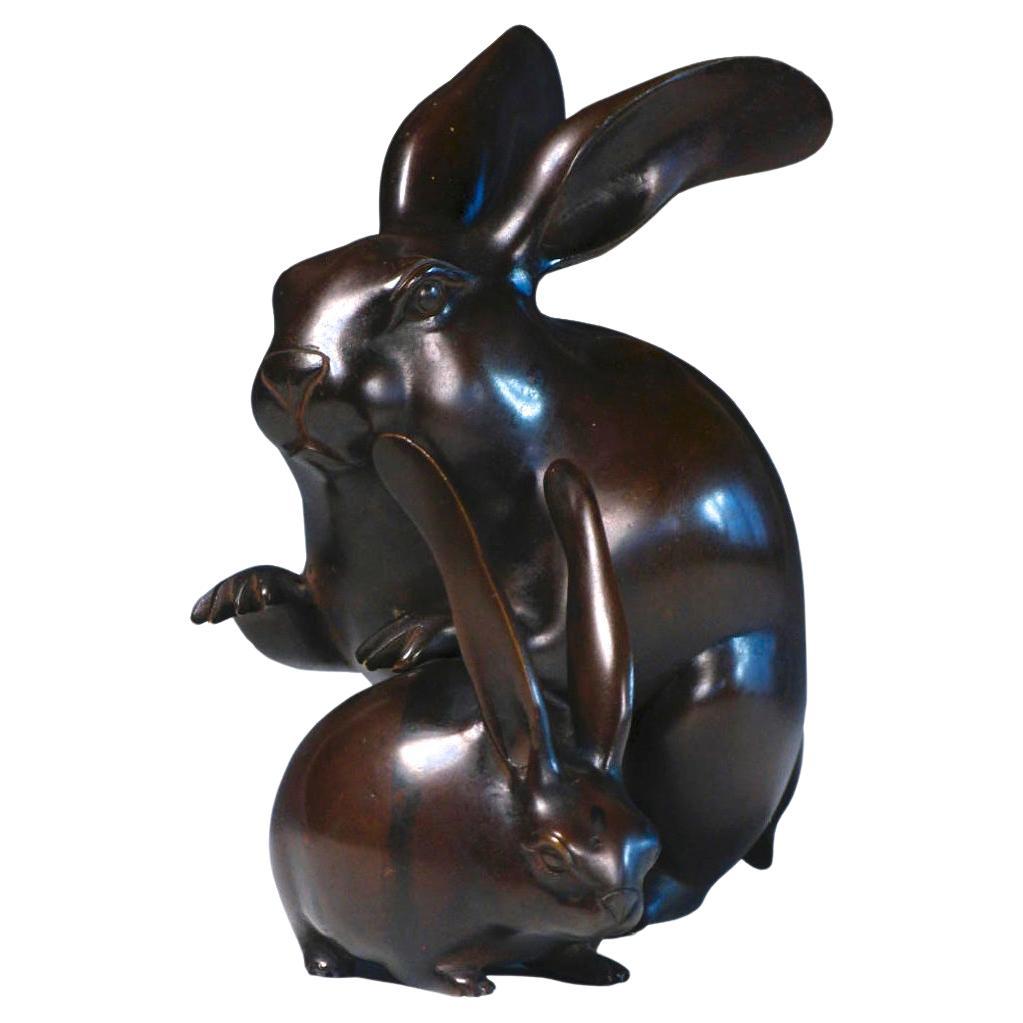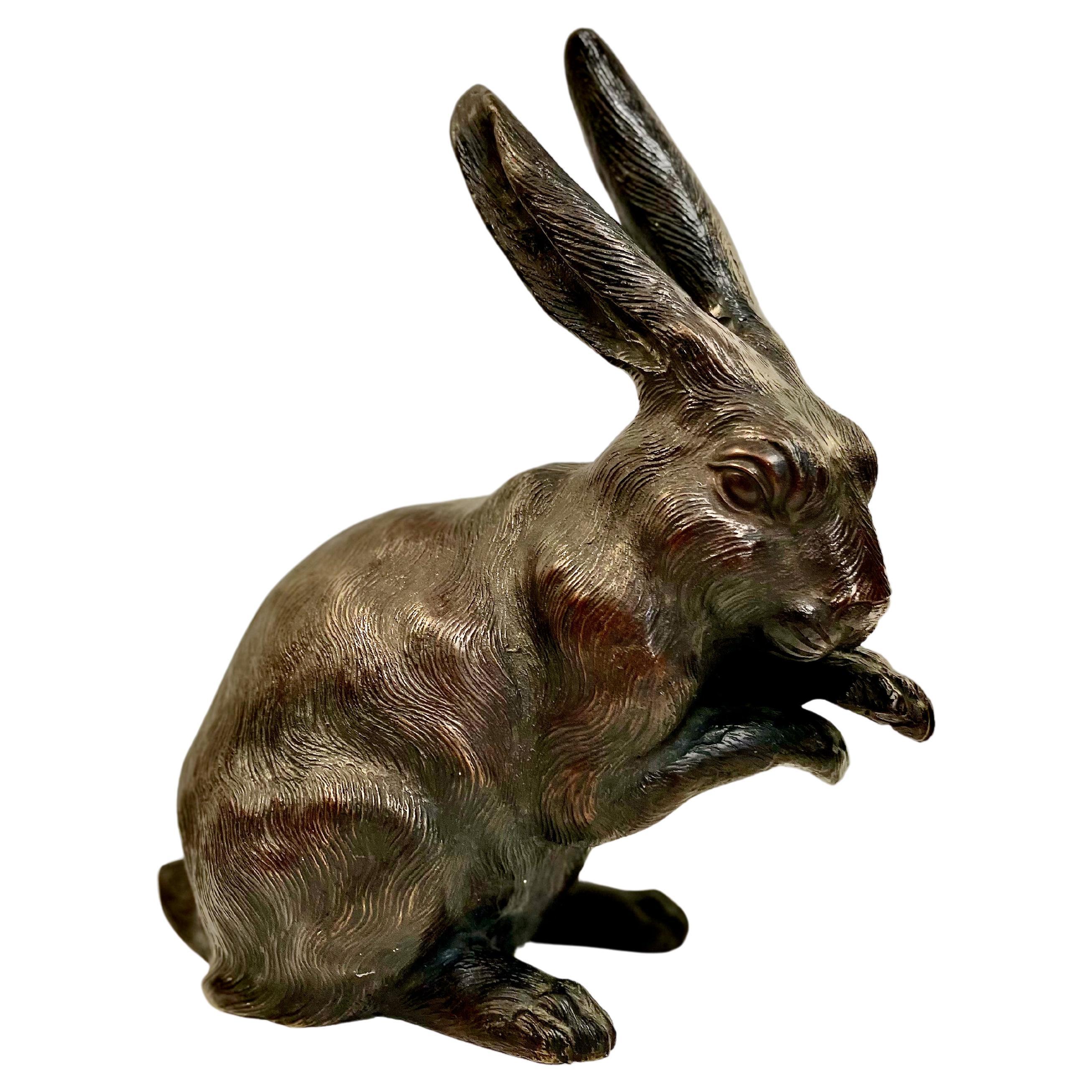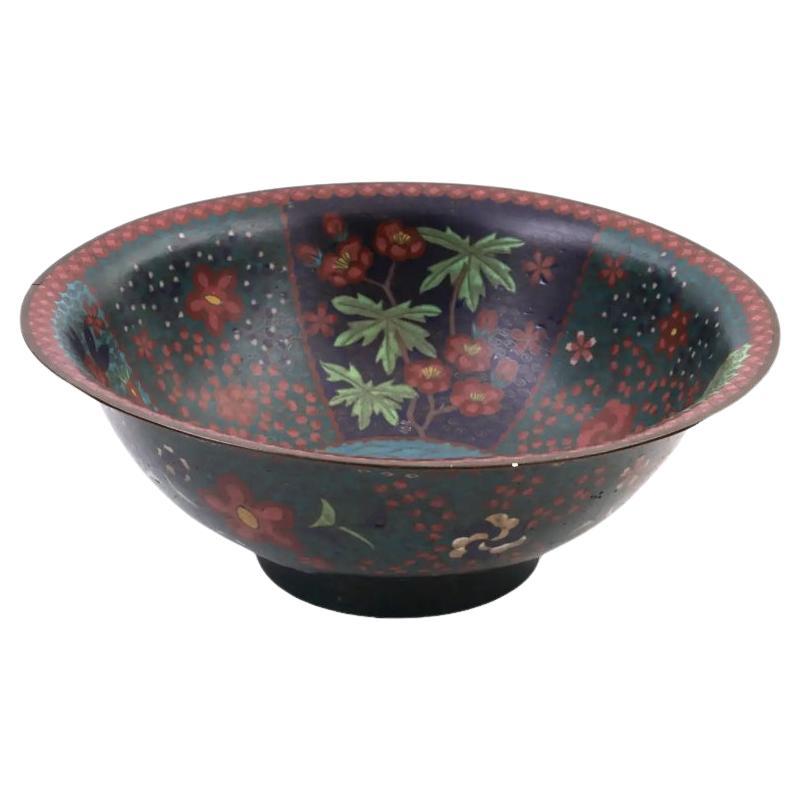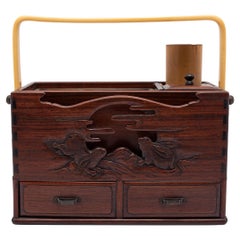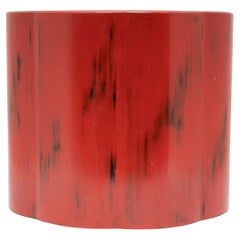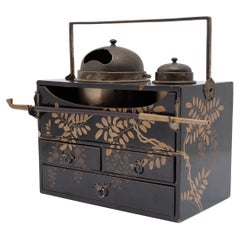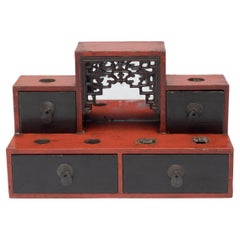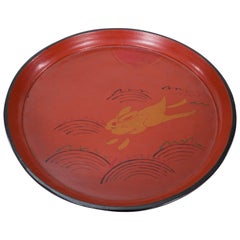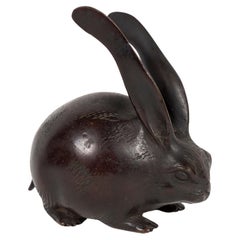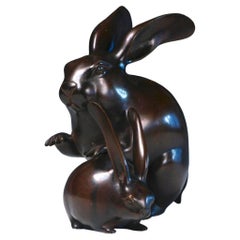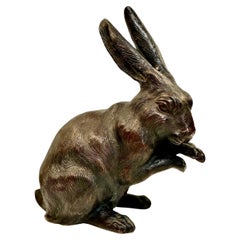Items Similar to Japanese Red Lacquer Negoro Hibachi with Rabbits, Edo Period, c. 1850
Video Loading
Want more images or videos?
Request additional images or videos from the seller
1 of 12
Japanese Red Lacquer Negoro Hibachi with Rabbits, Edo Period, c. 1850
$12,800
£9,654.51
€11,151.05
CA$17,933.68
A$19,941.23
CHF 10,439.59
MX$243,585.79
NOK 131,183.75
SEK 123,404.61
DKK 83,241.83
About the Item
With monumental scale and beautiful, hand-carved details, this remarkable red lacquer hibachi is a true work of art. Designed to hold glowing embers, hibachi vessels such as this were used for cooking or as a source of heat in Japanese homes. Placed under a low wood kotatsu table with an open slat top, the hibachi functioned as a grill and created a cozy gathering place for the family.
This grand, 19th-century hibachi has a large wooden body finished with layers of black and red lacquer in the style of Negoro lacquerware. The exterior is carved in relief with two leaping rabbits, symbols of luck, cleverness, and personal advancement. A copper-plated liner protects the hibachi from its fiery contents, along with an iron grate in the form of a double gourd, a symbol of health and longevity. On each side of the vessel hangs an elegant bronze drop handle inlaid with delicate chrysanthemums and trailing vines.
The gorgeous red lacquer exterior has aged beautifully from centuries of use and boasts a rich patina that calls to be touched. A beautiful example of Japanese lacquer (urushi), this classic hibachi comes to us from the private collection of renowned film critic Gene Siskel. We love it as a statement centerpiece or a jardinière for orchids and lush greenery.
- Dimensions:Height: 11.5 in (29.21 cm)Width: 23 in (58.42 cm)Depth: 21 in (53.34 cm)
- Style:Edo (Of the Period)
- Materials and Techniques:
- Place of Origin:
- Period:
- Date of Manufacture:circa 1850
- Condition:Wear consistent with age and use. Minor fading.
- Seller Location:Chicago, IL
- Reference Number:Seller: CMIG0011stDibs: LU820032176502
About the Seller
5.0
Platinum Seller
Premium sellers with a 4.7+ rating and 24-hour response times
Established in 1997
1stDibs seller since 2006
1,707 sales on 1stDibs
Typical response time: 1 hour
- ShippingRetrieving quote...Shipping from: Chicago, IL
- Return Policy
Authenticity Guarantee
In the unlikely event there’s an issue with an item’s authenticity, contact us within 1 year for a full refund. DetailsMoney-Back Guarantee
If your item is not as described, is damaged in transit, or does not arrive, contact us within 7 days for a full refund. Details24-Hour Cancellation
You have a 24-hour grace period in which to reconsider your purchase, with no questions asked.Vetted Professional Sellers
Our world-class sellers must adhere to strict standards for service and quality, maintaining the integrity of our listings.Price-Match Guarantee
If you find that a seller listed the same item for a lower price elsewhere, we’ll match it.Trusted Global Delivery
Our best-in-class carrier network provides specialized shipping options worldwide, including custom delivery.More From This Seller
View AllJapanese Tabako-bon with Two Rabbits, c. 1920
Located in Chicago, IL
This wooden box is a Japanese tabako-bon, or 'tobacco tray,' used to store tobacco and smoking accessories. Believed to have evolved from the traditional ...
Category
Early 20th Century Japanese Taisho Snuff Boxes and Tobacco Boxes
Materials
Bamboo, Bakelite, Hardwood
Japanese Red Lacquer Hibachi, c. 1900
Located in Chicago, IL
Designed to hold glowing embers, hibachi vessels were used for cooking or as a source of heat in Japanese homes. Placed under a low wood kotatsu table wi...
Category
Early 20th Century Japanese Meiji Lacquer
Materials
Copper
Japanese Gilt Takamaki-E Tabako-Bon, C. 1850
Located in Chicago, IL
This box with many drawers is a Japanese tabako-bon, or 'tobacco tray,' used to store tobacco and smoking accessories. Believed to have evolved from the t...
Category
Antique Mid-19th Century Japanese Meiji Lacquer
Materials
Brass
Chinese Lacquered Opium Pipe Bowl Stand, c. 1900
Located in Chicago, IL
This tabletop display stand was once used to elevate an opium smoker's collection of pipe bowls, a removable element of the opium pipe often made of fine materials such as jade, yixi...
Category
Early 20th Century Chinese Qing Tobacco Accessories
Materials
Wood, Mirror
Chinese Gilt Lacquer Stacking Box, c. 1900
Located in Chicago, IL
This finely painted box was once presented as a gift, filled with popular snacks like roasted melon seeds, dried fruit, and cinnamon-toasted soy beans. Used like a modern lunchbox, e...
Category
Antique Late 19th Century Chinese Qing More Asian Art, Objects and Furni...
Materials
Bamboo
Chinese Red Lacquer Hide Box, c. 1880
Located in Chicago, IL
This small treasure box from the late 19th century exemplifies the lavish splendor of the Qing-dynasty (1644-1911) decorative arts, finished with intricate surface embellishment and ...
Category
Antique Late 19th Century Chinese Qing More Asian Art, Objects and Furni...
Materials
Brass
You May Also Like
19th Century Red Lacquer Tray with Rabbit Running Over Waves Under Full Moon
Located in Hudson, NY
19th century Japanese red lacquer tray with rabbit running over waves under full moon. Mingei style painting, the imagery of this tray is bas...
Category
Antique Early 19th Century Japanese Edo Lacquer
Materials
Wood, Lacquer
Japanese small round bronze hare Meiji era
Located in PARIS, FR
Small round hare in bronze with dark brown patina, standing on its four legs.
In Japanese, the hare and the rabbit are referred to by a single word: usagi. The animal is one of the t...
Category
Antique Late 19th Century Japanese Japonisme Sculptures and Carvings
Materials
Bronze
Japanese Bronze Rabbits
Located in Point Richmond, CA
Japanese Bronze Okimono grouping of 2 figural long eared rabbits, consisting of a mother rabbit up on her hind legs and her child on all fours. They c...
Category
Vintage 1920s Japanese Showa Metalwork
Materials
Bronze
$2,200 / set
Japanese Okimo of Standing Rabbit
Located in Pasadena, CA
This is an impressive Okimo of a rabbit in a resting position. The bronze is very well cast in the form of a realistic rabbit. The bronze is signed on the bottom of one foot, as shown in photo. It is thought that having a rabbit in the house would bring good luck; meaning: we all need one! This guy would make the perfect desk accessory or book shelf eye-catcher.
***In Japanese culture rabbits are one of the signs of the Japanese zodiac. They are considered lucky as the Japanese kanji...
Category
Mid-20th Century Japanese Japonisme Metalwork
Materials
Bronze
$1,040 Sale Price
20% Off
Antique Early Meiji Japanese Cloisonne Enamel Bowl with Rabbits In Waves
Located in Long Island City, NY
An antique Japanese, Meiji period, footed enamel over copper bowl. The interior of the bowl is adorned with polychrome enamel panels depicting blossoming flowers surrounded by a swir...
Category
Antique 19th Century Japanese Meiji Metalwork
Materials
Enamel, Copper
Bronze okimono sculpture of an hare lying down
Located in PARIS, FR
Bronze sculpture with a brown patina that represents a hare lying down with an arched back. Its head and several other details are treated with great realism, from the texture of its...
Category
Antique Late 19th Century Japanese Meiji Metalwork
Materials
Bronze
More Ways To Browse
Mid Century Black Lacquer
Red Lacquer Furniture
Black And Red Lacquer
Red Lacquer Table
Edo Wood
Japanese Wood Plate
Japan Lacquer Table
Japanese Lacquered Table
Black Bronze Japanese
Red Lacquer Side Table
Japanese Metal Plate
Antique Metal Grate
Japanese Black Lacquer Table
Mid Century Rabbit
Japanese Lacquered Plates
Antique Japanese Lacquer Tables
Bronze Rabbit
Orchid Plates
